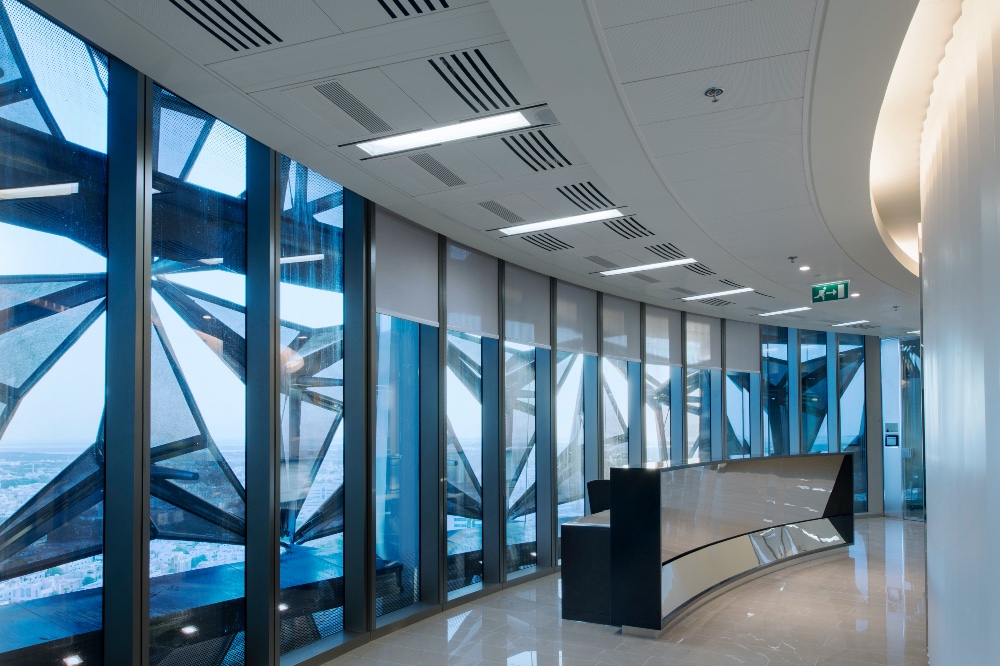With data centre owners and managers under increasing pressure to make their facilities more sustainable, it is surprising that one of the last areas they often consider is lighting. Graeme Shaw, technical application manager at Zumtobel Group, explains the benefits of LED lighting in a data centre, the key specification considerations and the recommendations laid out in the TIA-942-A standard.
LED has an extremely long life, low carbon emissions and excellent light quality. Despite all of these positives, data centres have traditionally been slow to adopt it, perhaps because it is estimated that lighting only comprises 3-5% of a facility’s energy load. This is addressed by a combination of increasingly innovative solutions and fast return on investment (ROI), meaning that owners and managers are making the switch to LED and lighting control as a way to contribute to a lower Power Usage Effectiveness (PUE) rating.
Setting the standard
When it comes to standards, BS EN 12464-1:2011 is having a significant impact, as it addresses the design and development of lighting schemes around a task or activity. Likewise, the need for effective lighting in data centres has not gone unnoticed by the Telecommunications Industry Association (TIA) and its TIA 942-A standard recommends the use of LED technology and defines the ideal placement of lighting fixtures above aisles and between cabinets. It also outlines a three-level approach:
- Level 1 unoccupied: Lighting for areas where video surveillance equipment is installed but doesn’t need to offer clarity for human vision.
- Level 2 initial entry: A lighting system that uses sensors that activate when a person moves around a facility. Aisles and passageways should be illuminated for safe movement and recognition of individuals on CCTV.
- Level 3 occupied: Designed for activities such as MACs, as well as maintenance and troubleshooting. TIA 942-A recommends that occupied working areas should have 500 lux in the horizontal plane and 200 lux in the vertical plane to enable operatives to clearly see equipment in racks.
Practice makes perfect
A best practice design comprising LED lighting technology, an intelligent lighting control system and a central power system (CPS) to support a dedicated emergency lighting system will have a positive impact on energy usage. In addition, it will reduce associated manual maintenance costs whilst creating a safer, more flexible lighting solution that can be quickly and easily adapted to suit changing requirements.
In addition to LED panels, tubes, battens and high bay lighting, leading LED lighting manufacturers are able to offer continuous row solutions that are tested and approved to perform within higher ambient temperatures. This not only lowers the running costs of a lighting scheme when compared to traditional compact fluorescent lighting technology, but also reduces the operating costs of a cooling strategy, which plays an important role in achieving a low PUE rating. It is, however, important to remember that lighting must be specific to the aisle layout, so enough light is available on the vertical at each rack.
Under control
We are some way from creating truly ‘lights-out’ data centres, so providing area specific lighting precisely when and where it is needed is an important design consideration. All too often lights are turned on manually across a large space when an operative might only need to work in one small section of a data centre. To compound the issue, lights often remain on long after a technician has left a facility, simply because they thought someone else might still be in the building.
This type of scenario is exactly why the introduction of innovative lighting control can prove beneficial. As additional energy savings of at least another 10% can be experienced when LED luminaires are integrated with sensors to manage when and where lighting is used, lighting control should be the rule rather than the exception.
A site-specific lighting control system that utilises the well-established DALI protocol enables each area to be autonomous. This further reduces operational expenditure by allowing lighting to be integrated into a building management system (BMS), with the benefit of off-site monitoring. Just as importantly, this level of integration and engagement allows an end-user to actively prevent issues before they lead to downtime.
Safety first
The final part of a lighting strategy concerns life safety. Data centres present a unique set of challenges in this area, so it is advisable to have a dedicated, addressable emergency lighting system that allows for full automation of testing – excluding an annual duration test.
Cutting edge technology can automatically report the status of an emergency lighting system. As the batteries have a 10-year life expectancy, the potential for human error is reduced and the costs associated with routine maintenance are lowered. Utilising a remote CPS/eBox based system also facilitates the support of higher ambient temperatures, as there is no need for a local battery supply to the emergency lighting, while a self-contained system can be easily extended with additional luminaires as required. When considering a system, always remember that robust is required, aesthetically pleasing is optional.
Next step
In order to achieve the most appropriate, reliable and sustainable lighting infrastructure within a data centre, it is advisable to engage with a solutions provider that can fully integrate all of the various elements outlined above. The pitfalls of a poor quality system can be significant and lead to premature product failure and the associated replacement and maintenance costs, so spending extra time at the specification stage and working with experts will lead to fewer issues in the long-term.


